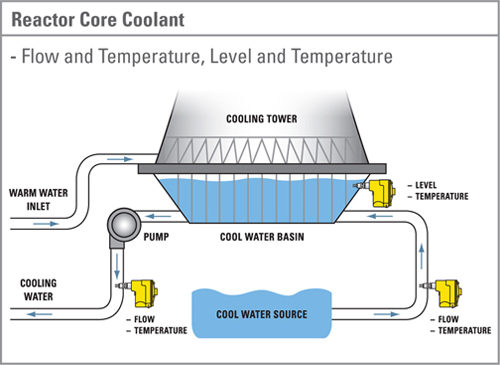Nuclear reactors require a huge continuous flow of water for cooling. There are a number of problems connected to this.
Reactors must be located near either major rivers, lakes or the sea coast in order to access water for cooling. This makes them vulnerable to floods. The Fukushima disaster in Japan was largely due to the flooding of the electrical generator rooms which had been placed in the basements of the reactor buildings in spite of warnings about flooding. A United States reactor was recently threatened by rising flood water. There is no real solution to location so reactors must be constructed in such a way to minimize the continuing threat of floods.
Some major world rivers no longer reach the sea for part of or all of year because so much water has been taken out of the river upstream for urban needs, industrial needs and agricultural irrigation. There have already been incidences where nuclear reactors had to be shut down because the water level of the rivers providing cooling water dropped to low to cool the reactors. This situation is not going to improve as world supplies of fresh water are diminishing.
In order to effectively cool reactors cooling water needs to be under 75° F. Due to the warming of the world’s oceans caused by global warming, the temperature of the water near a reactor in Connecticut rose above 75° F and the reactor had to be shut down until the water temperature dropped. Climate projections suggest that the temperature of ocean water will continue to rise so this might be an increasing problem for any reactors that use sea water for cooling. Once again, there is no solution to this problem.
The intakes for cooling water near a nuclear reactor are relatively small compared to the scale of the rest of a power plant. If something blocks the flow of water into the cooling intake pipes, then the reactor would have to be shut down. One man in a small boat or on foot could easily carry enough explosives to destroy extensive sections of a reactor cooling intake system. The reactor would have to be shut down while the intake system was rebuilt. Enhancing security with fences, underwater barriers, patrols, sensors, etc. could help with this problem but would be expensive. And, any security measures can be defeated.
These concerns about cooling water could severely impact the practicality of using nuclear energy as a reliable source for a major portion of our need for electrical power. Unfortunately, these concerns are seldom raised in the discussion of problems with the use of nuclear power. And, even more unfortunately for the proponents of nuclear energy, these problems for the most part do not have solutions.
Picture from nuclearenergyinfo.blogspot.com:
